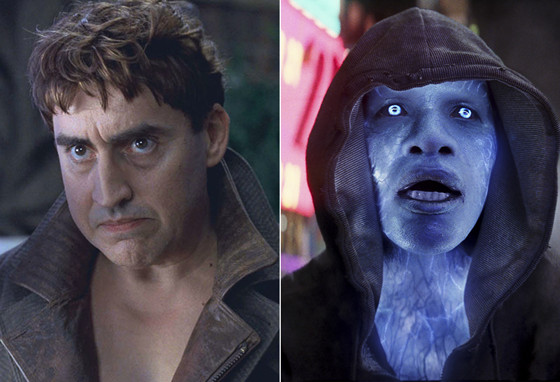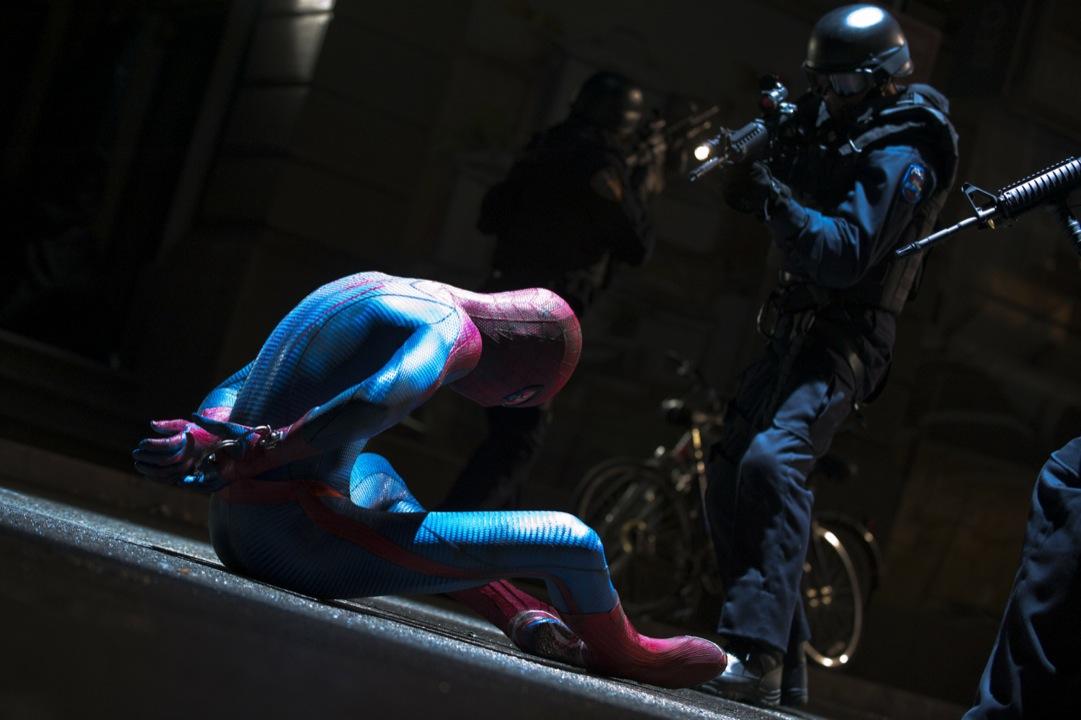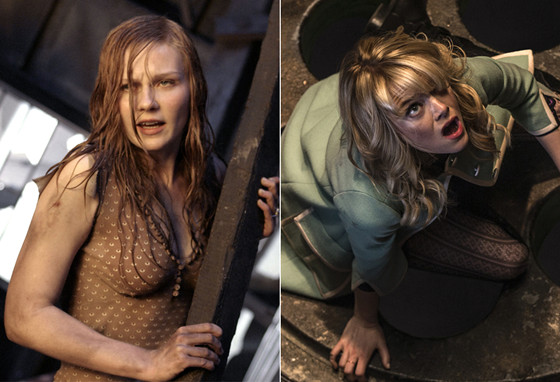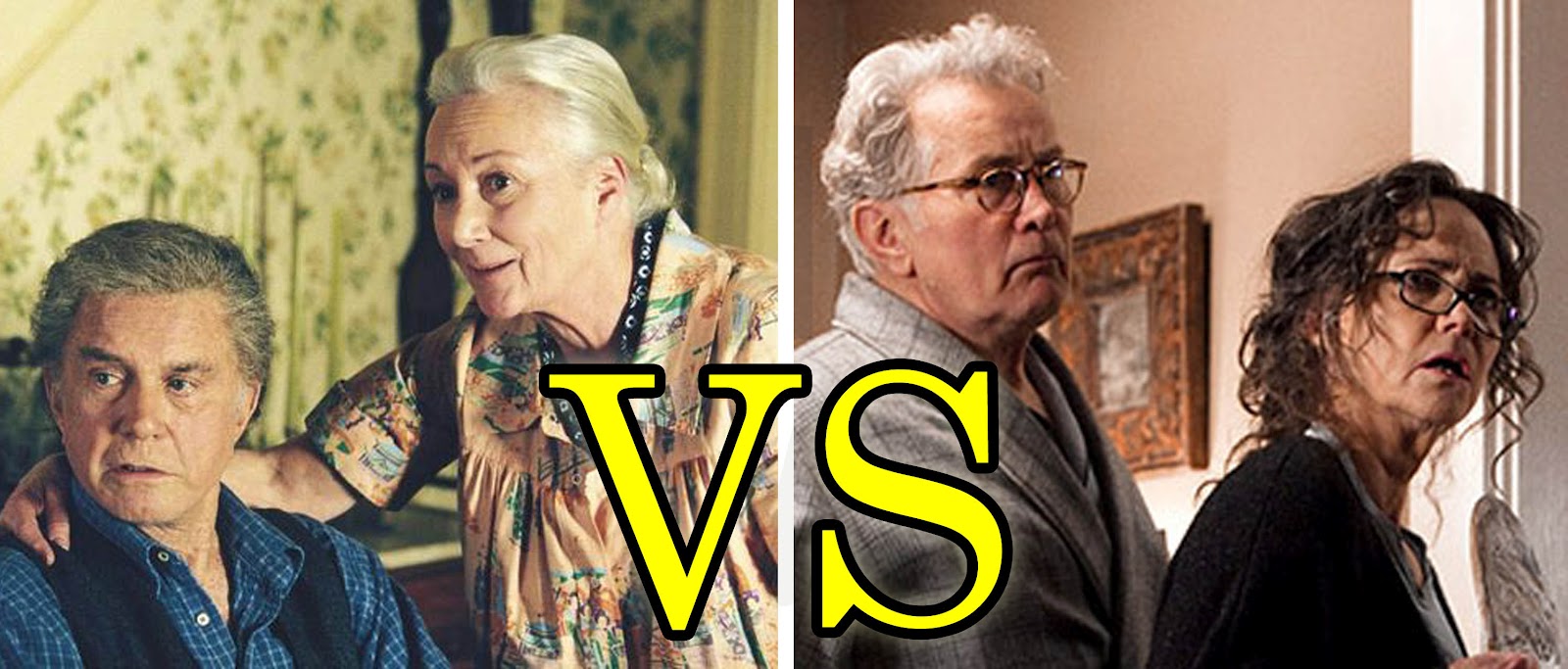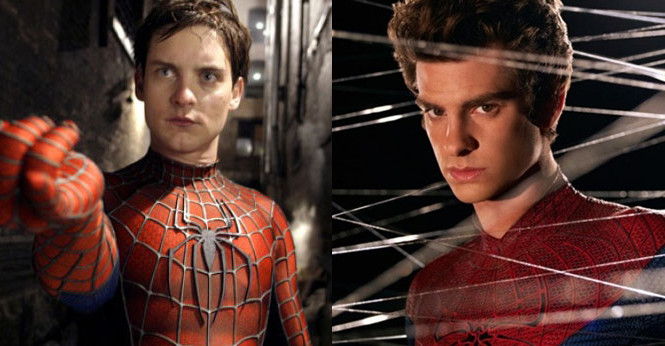
With the success of Bryan Singer’s X-Men in 2000; the door was opened, and the modern superhero film era began. Fast forward to two years later where Columbia Pictures and Sam Raimi released Spider-Man and it was cemented. Here, in the present, we have the benefit and sometimes dissatisfaction of witnessing our beloved heroes of comic book lore triumphing on the silver screen.
10 years ago Spider-Man 2 was released and is widely regarded as one of the best Superhero films to date, but since the failed Spider-Man 3 and aborted Spider-Man 4; Sony Pictures sought to re-boot the web-slinger in a darker, more gritty light, that would appeal to modern audiences in 2012.
With this article we will compare Marc Webb’s first two Amazing Spider-Man films with Sam Raimi’s first two and why Raimi had it right.
Spider-Man’s origins are important and Raimi did it all good, but Webb not only did the exact thing in his first film, but kind of re-did it in his second. A hero’s origin is important, it provides the base for the rest of the film and whatever sequels take.
In Raimi’s film, Spider-Man makes his choice to stay away from Mary-Jane because she could be hurt, but in Webb’s film, Spider-Man begins his life as a hero by, yes saving the day, but he ignores a dead man’s wish for the safety of his daughter because he was dating her for a little while? We are given a Spider-Man that appeals too much to teenage audiences, rather than a Spider-Man that should appeal to fans of all ages while being a story with teenagers.
15. The Villains
Anyone who doesn’t realize by now needs to know that Marc Webb is trying to create the origins of a huge universe of enemies for Spider-Man. It has already been announced that there will be a Venom AND a Sinister Six movie, and the most keen eyed viewer would notice the Venom file in TASM2 when Harry activates the chip his Father gave him. Marc Webb is doing a good job of seeding the foundations of his evil universe, but the choices he is making with the present villains in his films is only allowing them to suffer.
Beginning with Webb’s first film: The Amazing Spider-Man, he chose The Lizard which was alright, (let me admit that I did enjoy TASM) but when it came for the sequel and upping the ante; he chose to include Electro and Green Goblin, among other cameos for upcoming villains in his universe. Webb’s decision was his film’s downfall because with two villains origin stories happening at once, AND Peter Parker as Spider-Man, AND his relationship with Gwen Stacy; it felt stuffed.
We were left with a two hour and forty five minute lead up into what is sure to be a pretty epic third installment in Webb’s Spidey universe and some hopefully good villain films, but that’s the point. The existence of the planned extended Spider-Man universe has lead to an ENTIRE film becoming exposition, and… Where was Spider-Man?
Raimi did himself the benefit of beginning his jaunt in NYC with Spider-Man with Green Goblin as his initial and only enemy which provided us with a chance to see Peter Parker become Spider-Man that paralleled Norman Osbourne’s transformation into The Goblin which led to a climax between the two. (Webb’s TASM did something similar but, we’ll get to that)
It was also great because it showed us Harry Osbourne from the beginning, and Raimi allowed Harry and Peter’s relationship deteriorate because of Spider-Man from the end of his first film, and into his second. He was able to successfully balance the development of his villains and Peter’s story arc… that is, until the third film.
14. The Crane Operators
This is a kind a small reason, but… c’mon. In The Amazing Spider-Man, after a pretty good and darker take on the character; Peter is shot in the leg for no reason at all by the NYPD and is trying to make it to Oscorp at the end of the long street he is on, (which is laden with buildings on either side… by the way) and is fighting along slowly to jump and climb the buildings toward where his beloved Gwen Stacy and The Lizard await for a final showdown.
A man whose child was saved by Spider-Man sees this on T.V. mobilizes his construction crew in a really cheesy way to hang the arms of their huge cranes over the street to give Spidey a quick and clear path to swing to Oscorp.
Alright, I get it. Webb wanted to show the city uniting behind Spider-Man as he was struggling, and to show us that Spider-Man needs his city just as much as it needs him… but really? Right after you witness Gwen’s father Captain Stacy remove Peter’s mask and then Peter dispatch all of the cops around him with his head faced down, only to reveal himself to the shotgun toting Captain as his daughters boyfriend, and then grabs his mask to jump away when a dumb officer ignores Stacy’s order to hold his fire and puts a round into Peter’s leg.
We hear a bunch of cheesy workin’ man quotes like “time to put in some overtime” and then see Spider-Man swing across the beams with ease, when 20 minutes later, right before the credits we see him doing the same thing he could have done, and has ALWAYS done: use the damn buildings!
Raimi relayed this same point in Spider-Man in a simple and more effective way by having the citizens of NYC chuck whatever they could at Green Goblin as he was trying to save all the kids in the Wire car. Sorry, I hate that crane part.
13. Mary-Jane vs. Gwen Stacy
Let me start off by saying this, I’m not taking anything away from the way that Andrew Garfield or Emma Stone have played Peter Parker and Gwen Stacy, because the chemistry they have together is really great, but lets ask ourselves… is that why we’re all in love with Gwen Stacy? She’s a dream girl, she’s adorable, her and Peter are really perfect together, yada, yada, yada. What I’m asking is if she made the films any better than Raimi’s Spider-Man films.
Mary-Jane Watson is more iconic to a wider audience of Spider-Man media and I really think that Raimi did right by his films by choosing to include her for us all to see as Peter Parker’s first love interest, especially because he handled it better.
I’ll be getting into my issues with our current Peter Parker and how he is being handled later but, it became ever more apparent that Gwen’s role in Peter’s life to leave. In TASM Gwen and Peter fall madly in love and are in puppy dog, teenage love the entire time, and I hope by now you have heeded my spoilers warning if you haven’t seen TASM2.
Gwen announces midway through the film that she’s moving to London after breaking up with Peter earlier in the movie after revealing that Peter has been breaking up with her many times since the first film because of his guilt from the death of her father.
The whole film plays as more of a romantic comedy than a superhero film between Parker and Stacy and they shove that relationship down your throat during most of the run time that is not devoted to the villains to make Gwen’s death at the climax of the finale more important for Peter.
Raimi developed Peter and Mary-Jane’s relationship slowly, with Peter recognizing that he can’t be with MJ because of his responsibility of the power he has and the damage it almost had caused her. More importantly, he continues this theme into most of the second movie because of that same reason; how can Peter be happy AND be Spider-Man?
Yes. He learns this the hard way in TASM2 and it was really well done, but overall; TASM and it’s sequel almost made Gwen Stacy the main character, I mean she almost made Peter move to London… away from New York… could you imagine the internet explosion?
12. The Music
I don’t know about you, but music is huge for me while watching a film. It adds so much to the emotion and overall feeling of the entire movie and one of the best things about Raimi’s Spider-Man films was Danny Elfman’s score. Yes, James Horner’s Amazing Spider-Man score was good but it felt kind-of… normal.
Elfman is mostly known for his collaborations with Tim Burton, and his weird and Gothic style was a perfect fit for the images and aesthetic for Raimi’s film. I think there was a reason why Horner was replaced with Hollywood wizard Hans Zimmer for TASM2 who made the music more impressive, but it wasn’t his best. Dubstep? Really?
11. The Amazing Spider-Man Was Almost A Complete Copy of The First Raimi Film
Marketing for The Amazing Spider-Man kept promising us this whole “Untold Story” thing which ended up being kind of misleading. The build up was cool, and the anticipation was pretty intense, but then we were treated to the same exact story we had seen before with a different villain, a different girl, and a different third act.
Raimi nailed Peter Parker’s origins and how he became Spider-Man, and really; how many ways can you begin Spider-Man? Webb couldn’t avoid the same old origin story in TASM and of course, made it his own variation, but it wasn’t fresh, and it wasn’t new; it was the same old Spider-Man in a different package.
10. Uncle Ben & Aunt May
This wouldn’t be a reason until I saw TASM2. In the film, Marc Webb pretty much makes Uncle Ben unimportant. What? Uncle Ben? Yeah. You know, with great power comes great responsibility. In Raimi’s Spider-Man, Uncle Ben and Aunt May both look, and act the part; Uncle Ben dies and burns his messages into the vengeful mind of Peter Parker that ultimately helps him become Spider-Man.
The same thing happens in TASM, and then in TASM2 they kind of ignore it and we witness Peter’s father Richard send his last message to the world from a crashing plane after a daring fight. Well, when Peter finds the message later in the movie, his late Father echoes “great power and responsibility” and in an emotional scene Peter cries and is inspired by his father, thus kind of removing good ol’ Uncle Ben from the seat of inspiration. Uncle Ben is mentioned once or maybe twice in the film casually, compared to Raimi’s films which seat Uncle Ben firmly into the continuity of each.
9. The Aesthetic
Admittedly, Marc Webb restored the comic-y aesthetic to the Spidey franchise with The Amazing Spider-Man 2, but in his first film; he seemingly tried to go the darker, more “Nolan” approach to his hero. It kind of worked but in TASM2 he really hit it in the head… when Spider-Man was actually on film.
Raimi’s approach was spot on from the get-go, having the benefit of making his film in a time where studios believed that people weren’t ready for a dark approach to a superhero, and wanted it to be lighter. The resulted with a tone that was perfectly in sync with the feeling of Spider-Man comic books and a comic book in general, with the overacting of Willem Dafoe when he was in his Goblin state, and Peter’s clever little jabs everywhere, just as two examples; you felt like you were watching a comic book.
Webb’s first film borrowed too heavily from the aesthetic of Batman Begins to put Peter in a darker world and it didn’t work which made Webb change his Spider-Man by look and feel in his sequel, and it sort of makes it feel like a reboot of a reboot.
